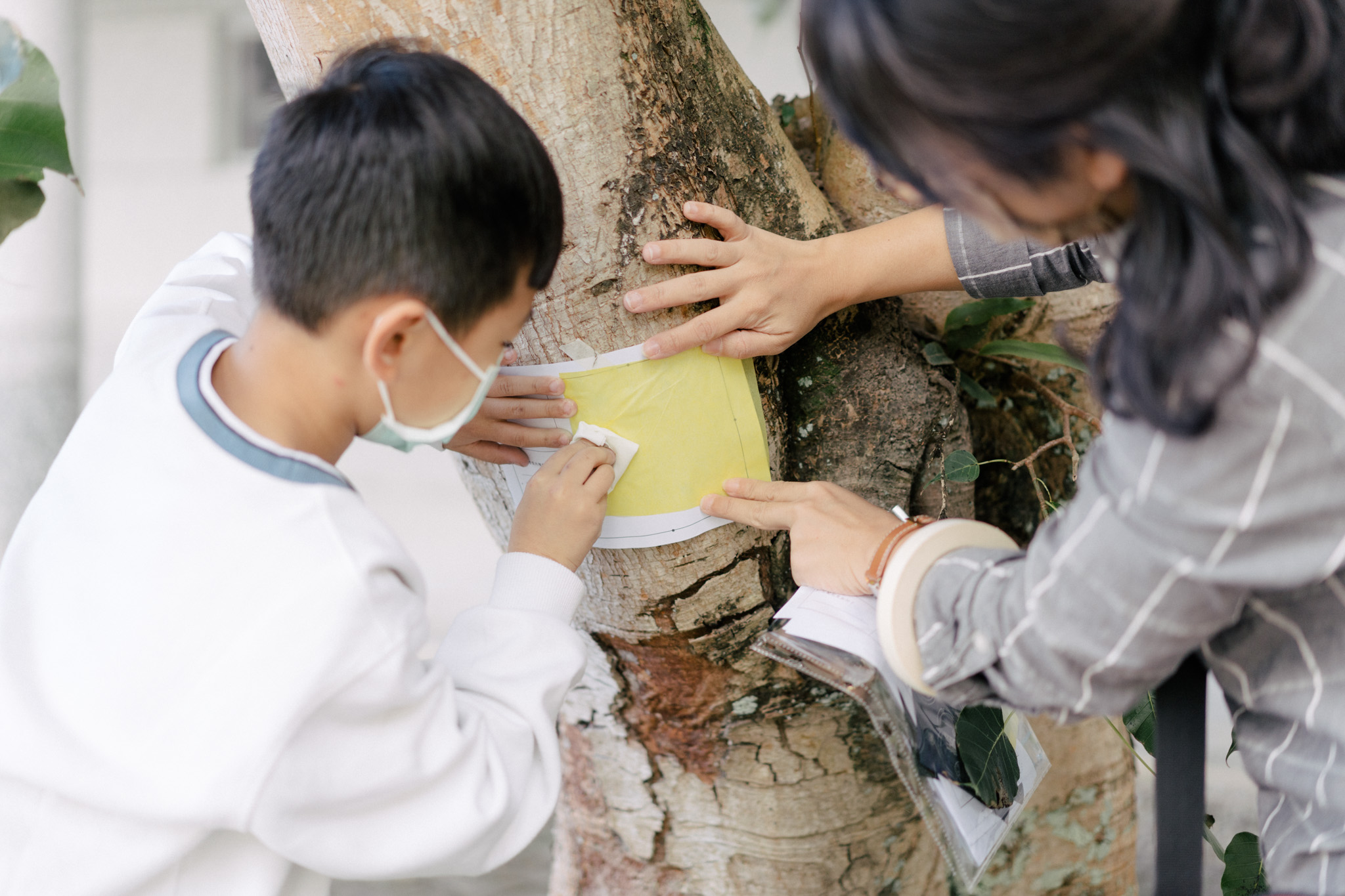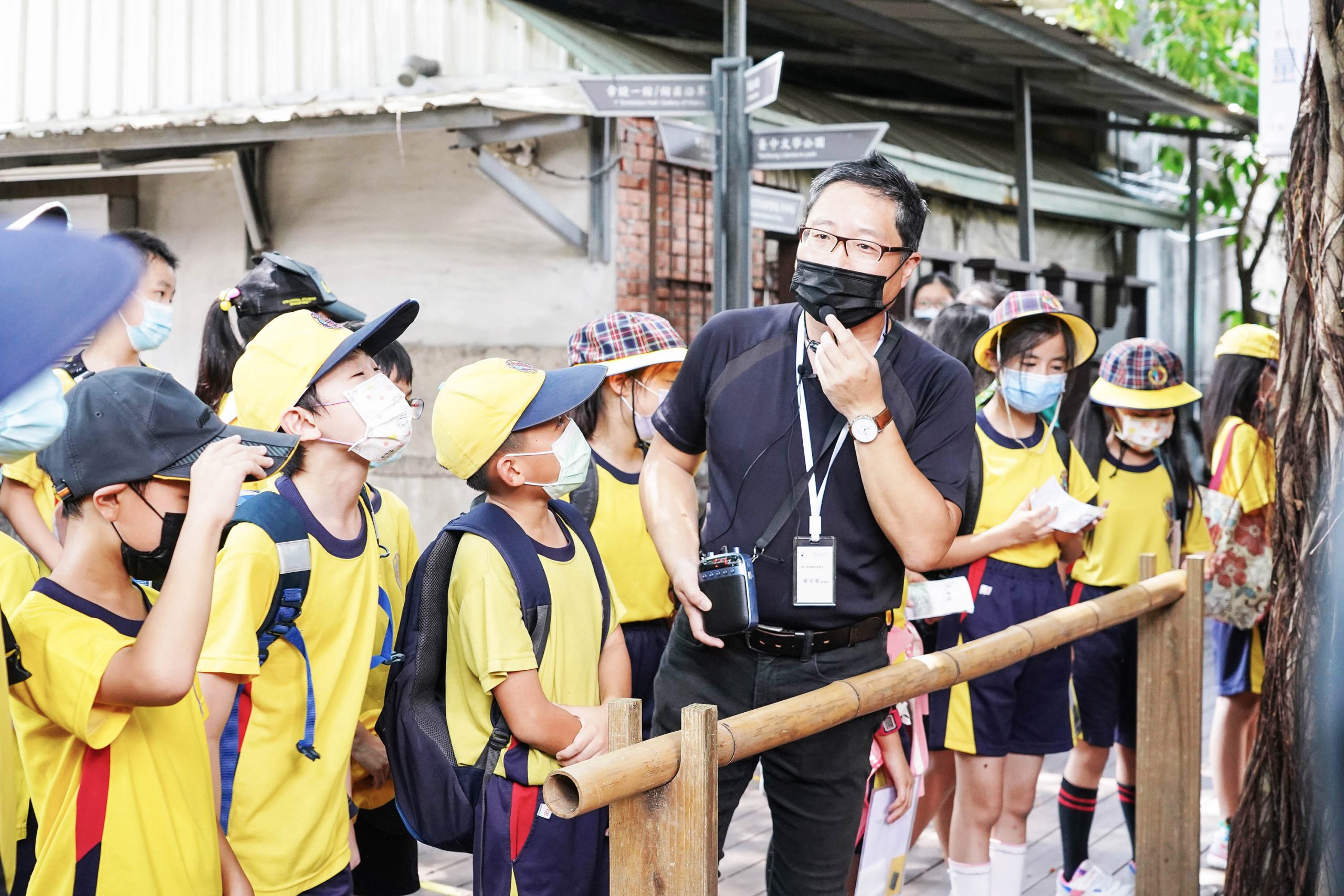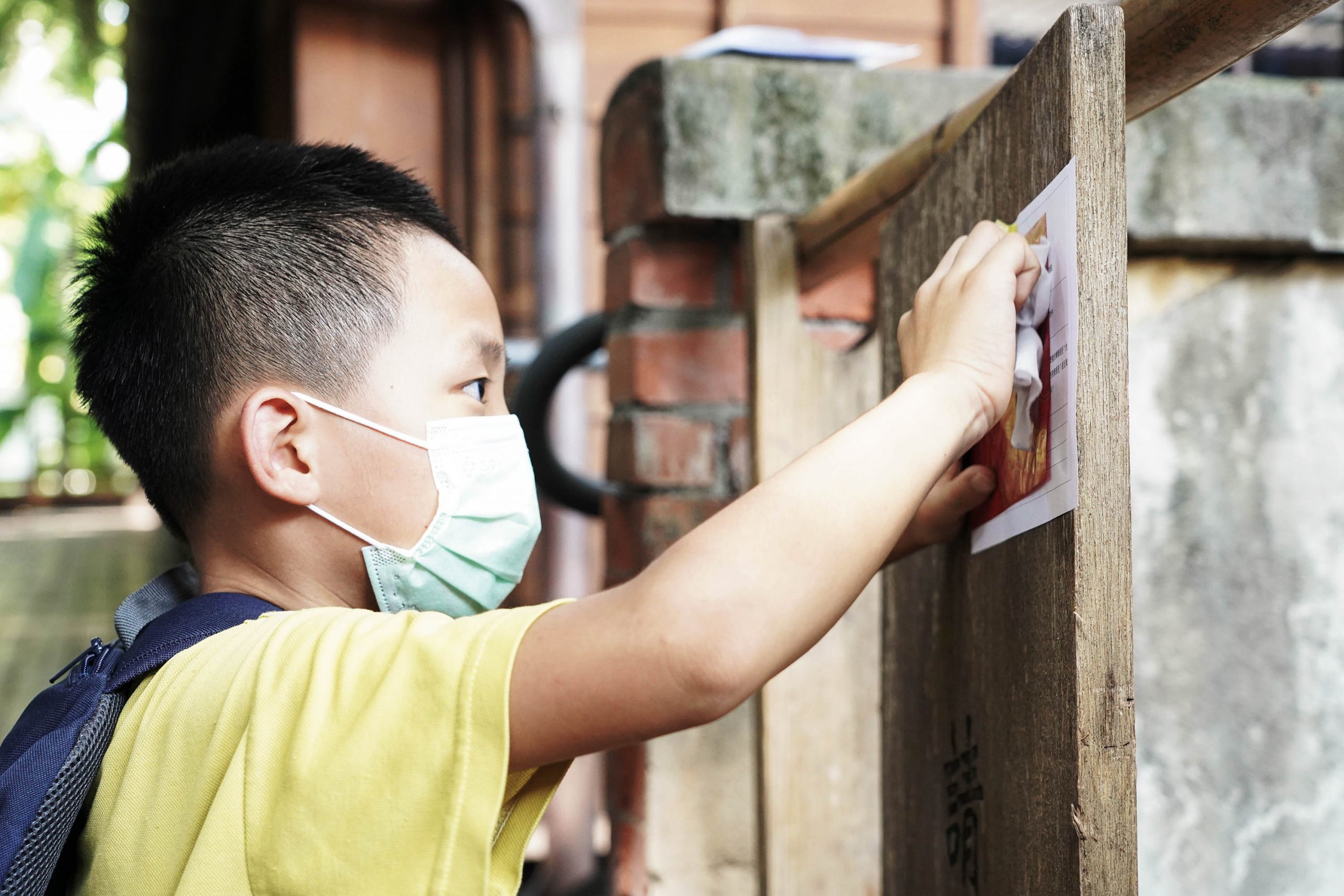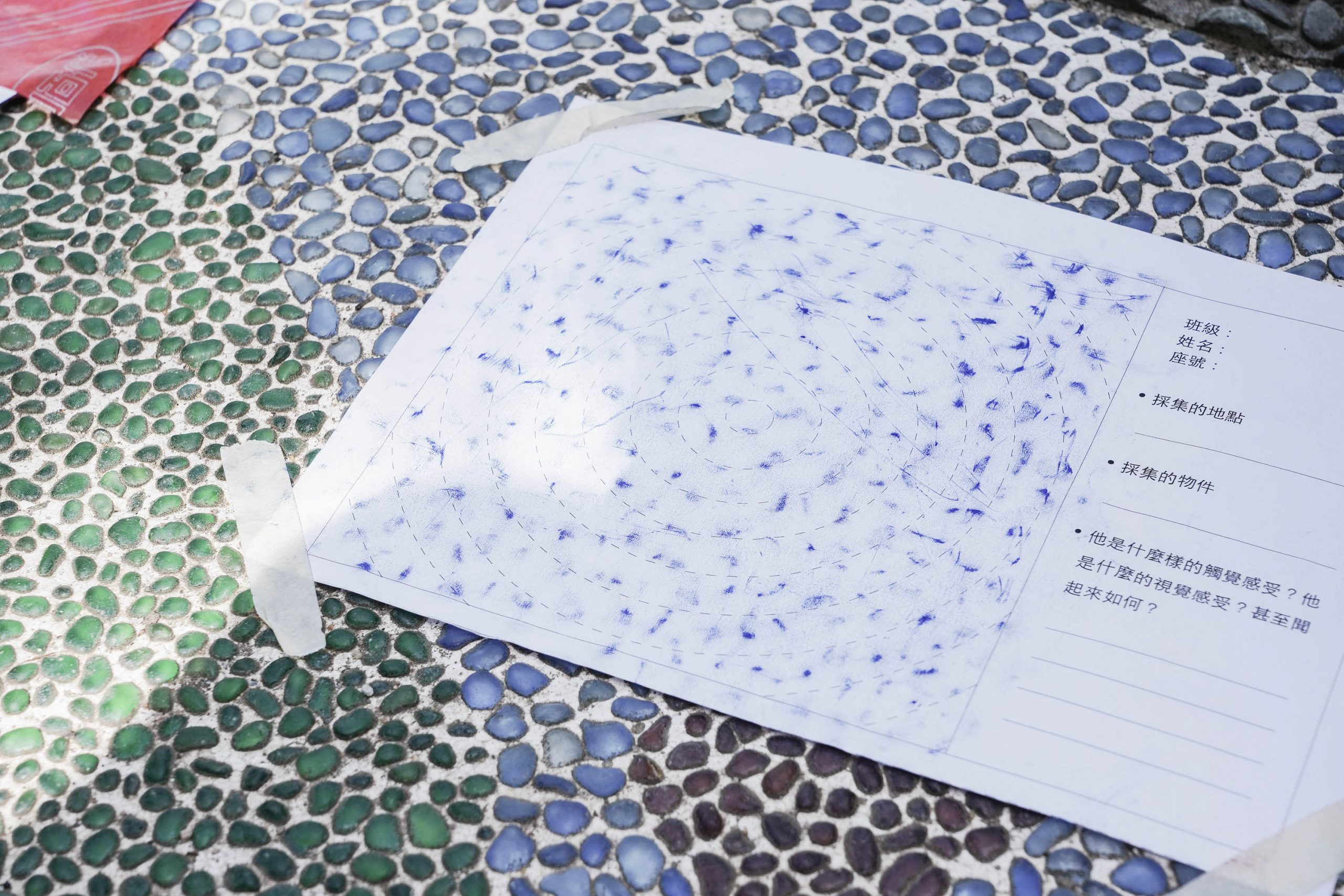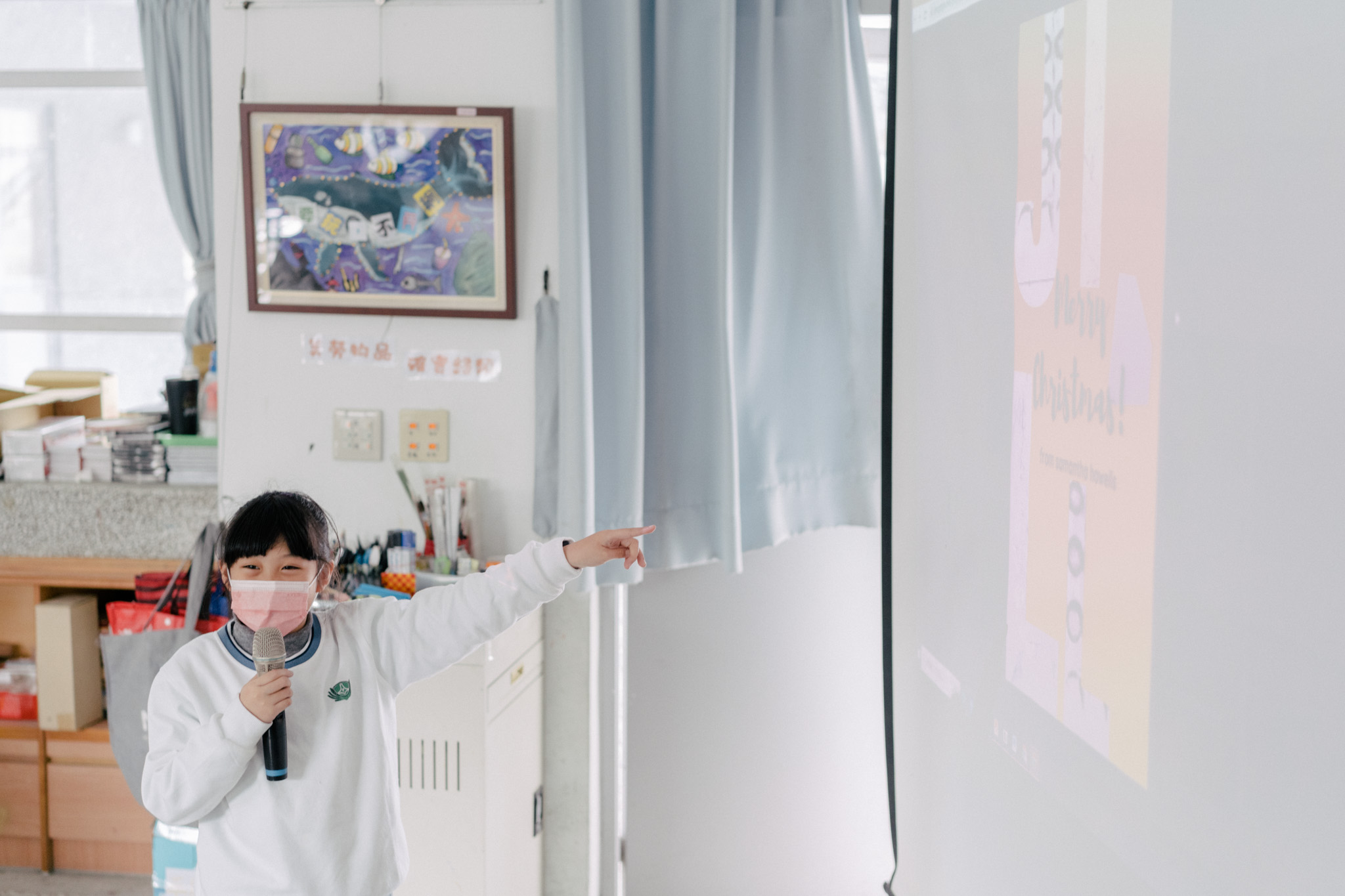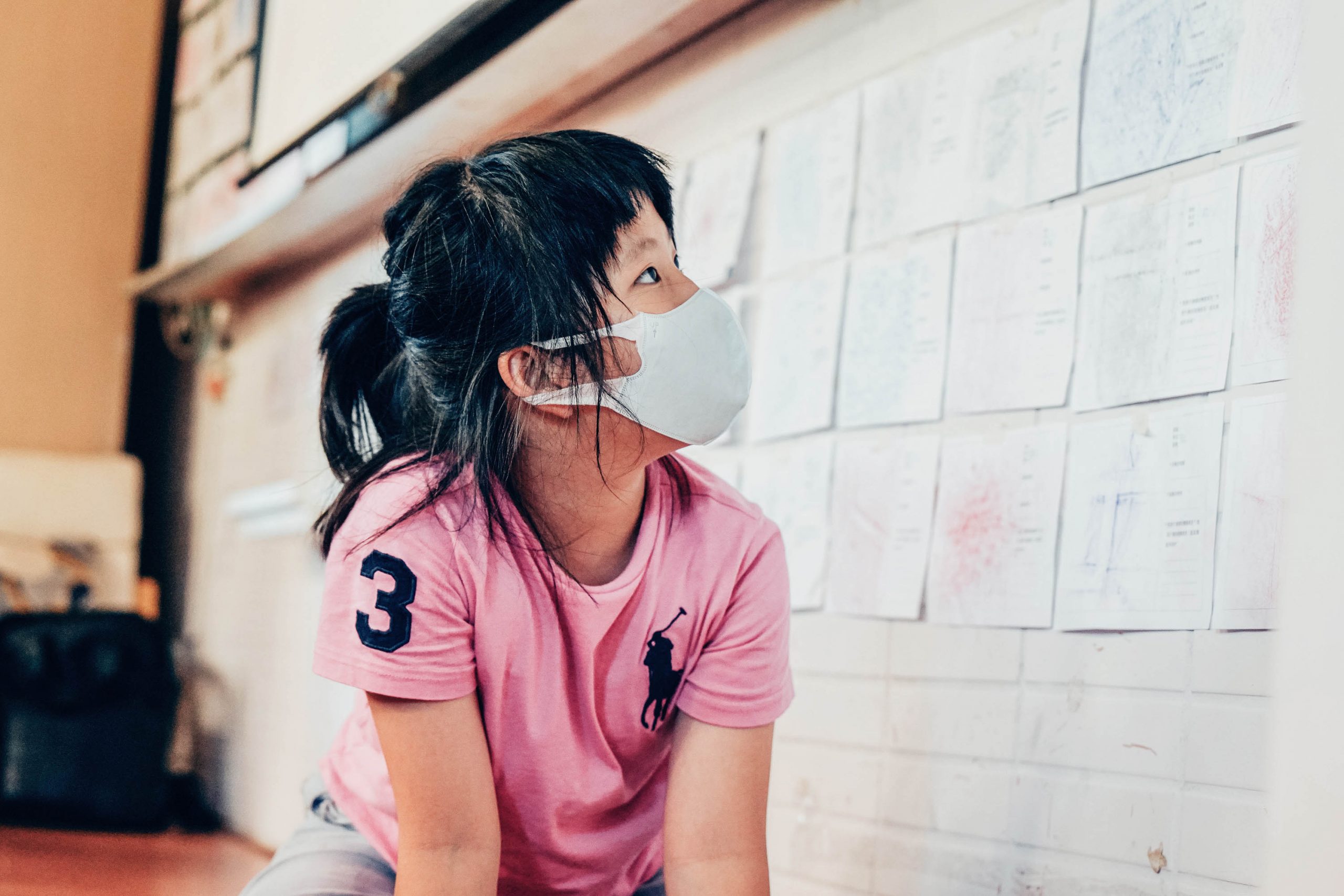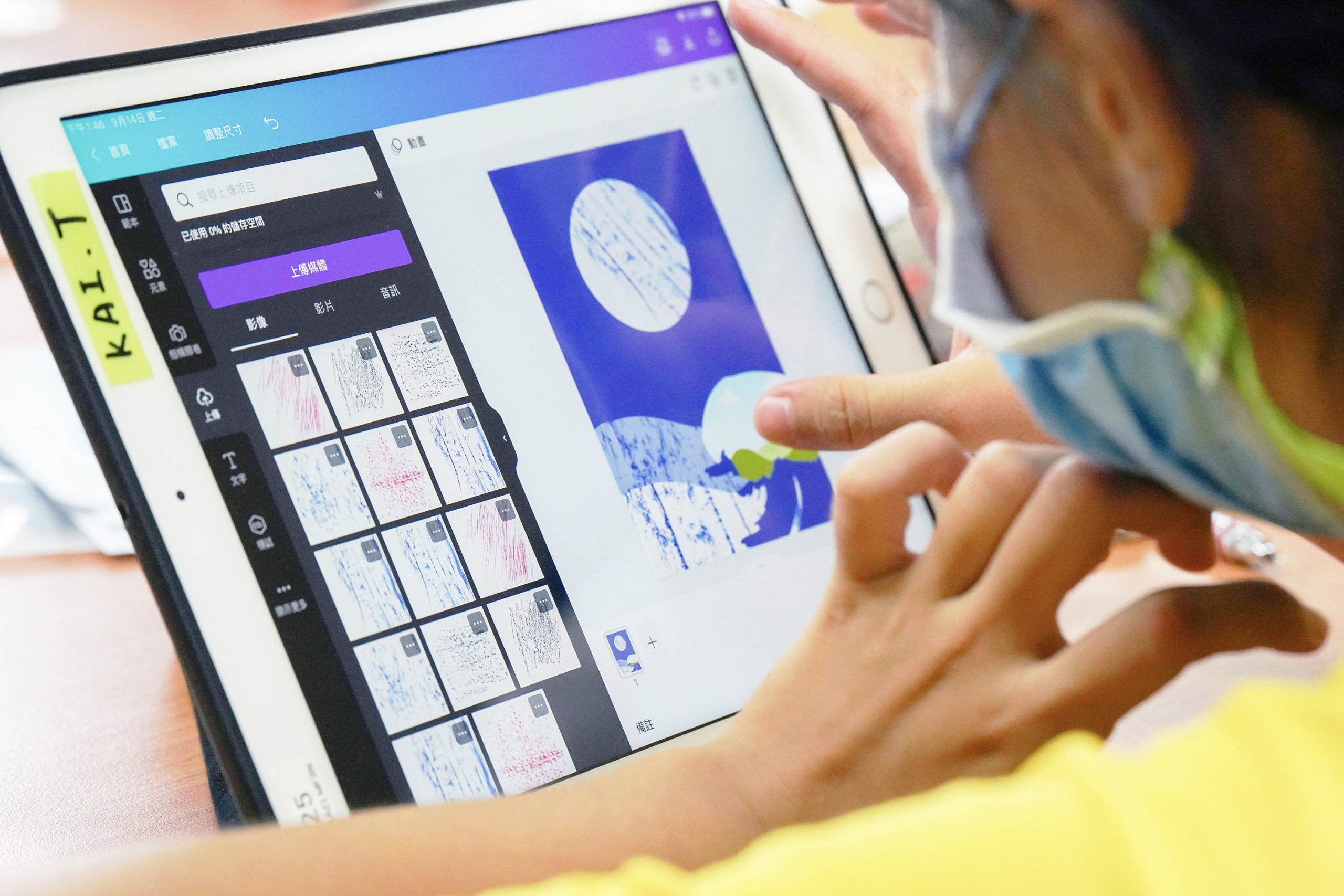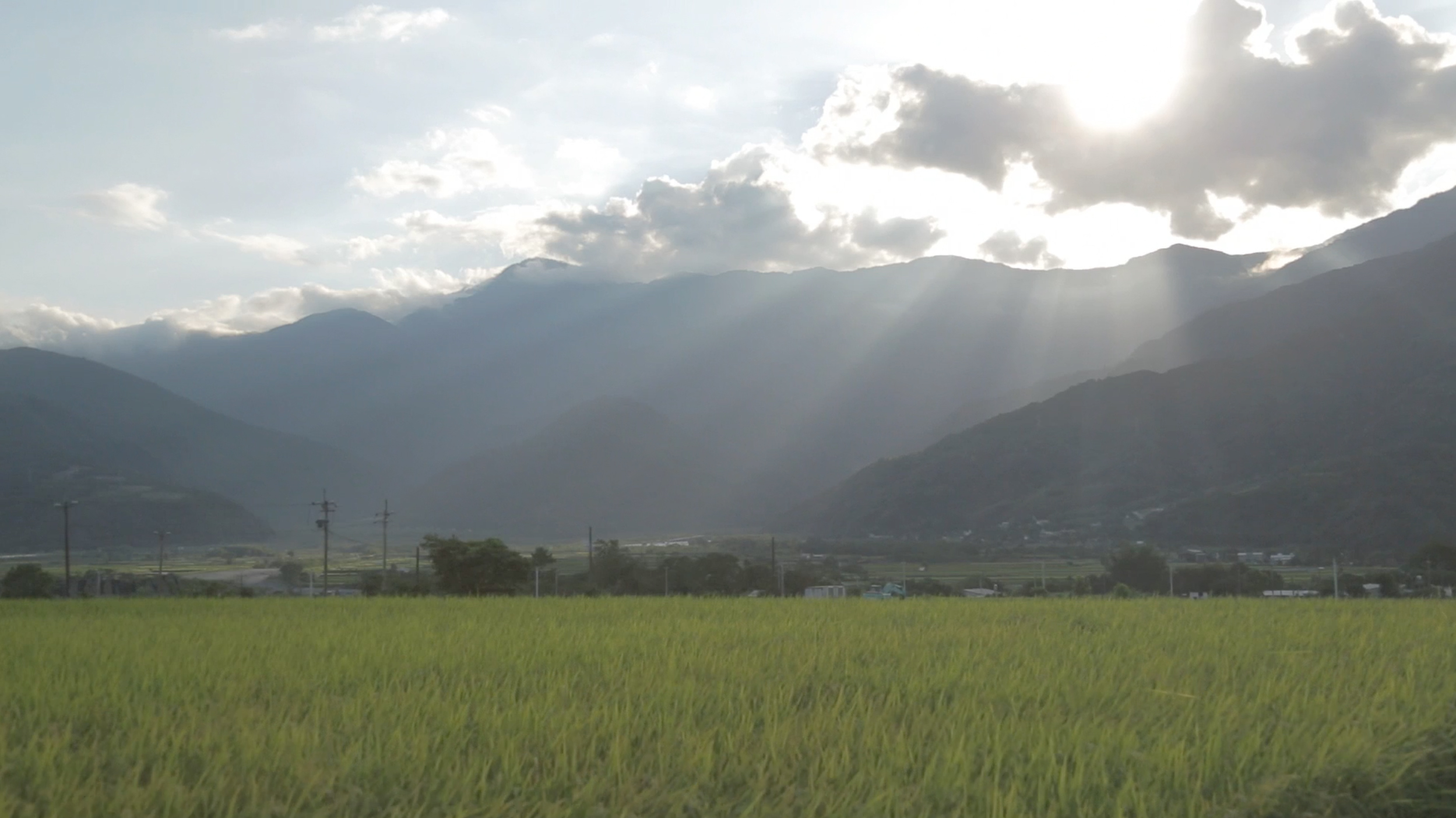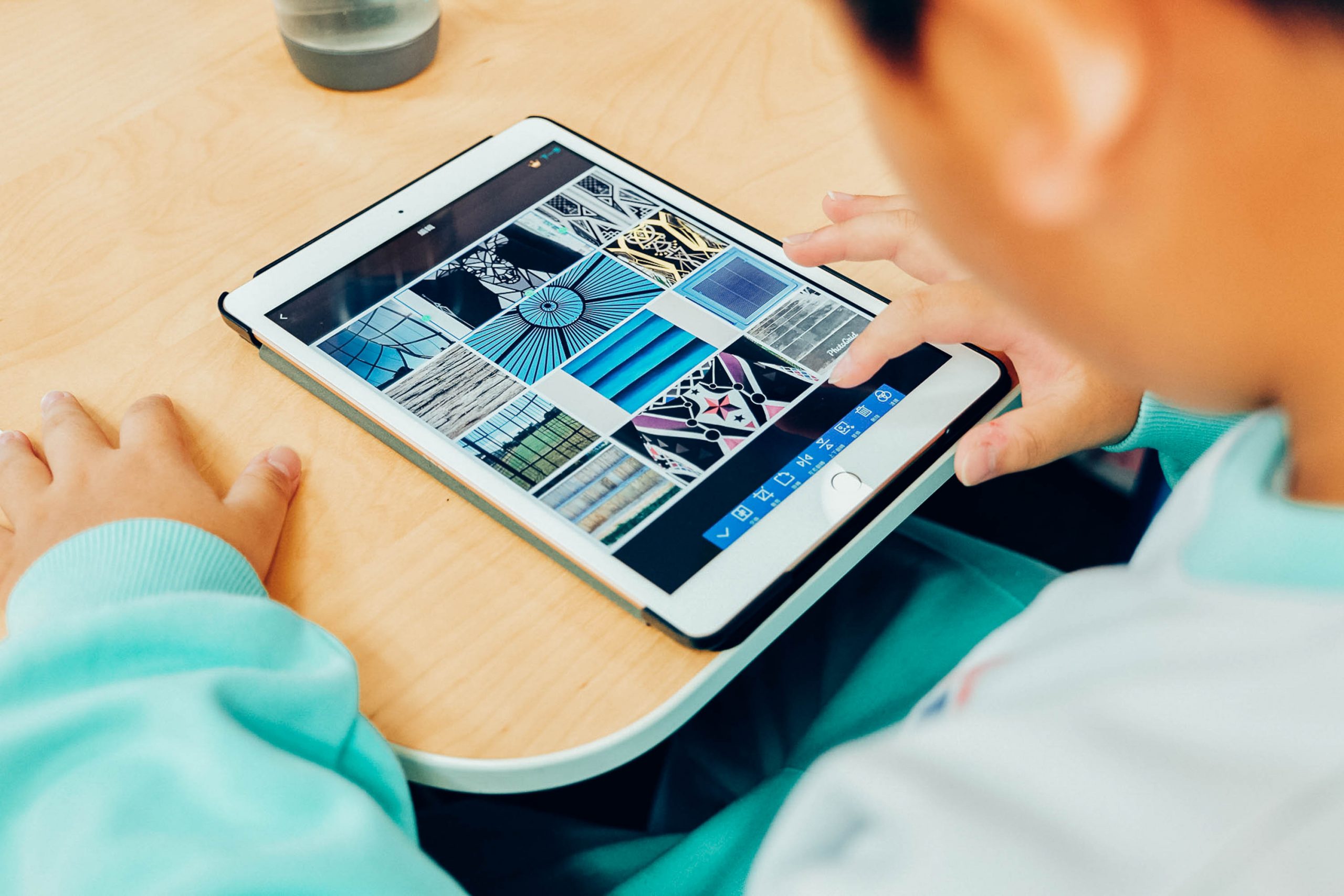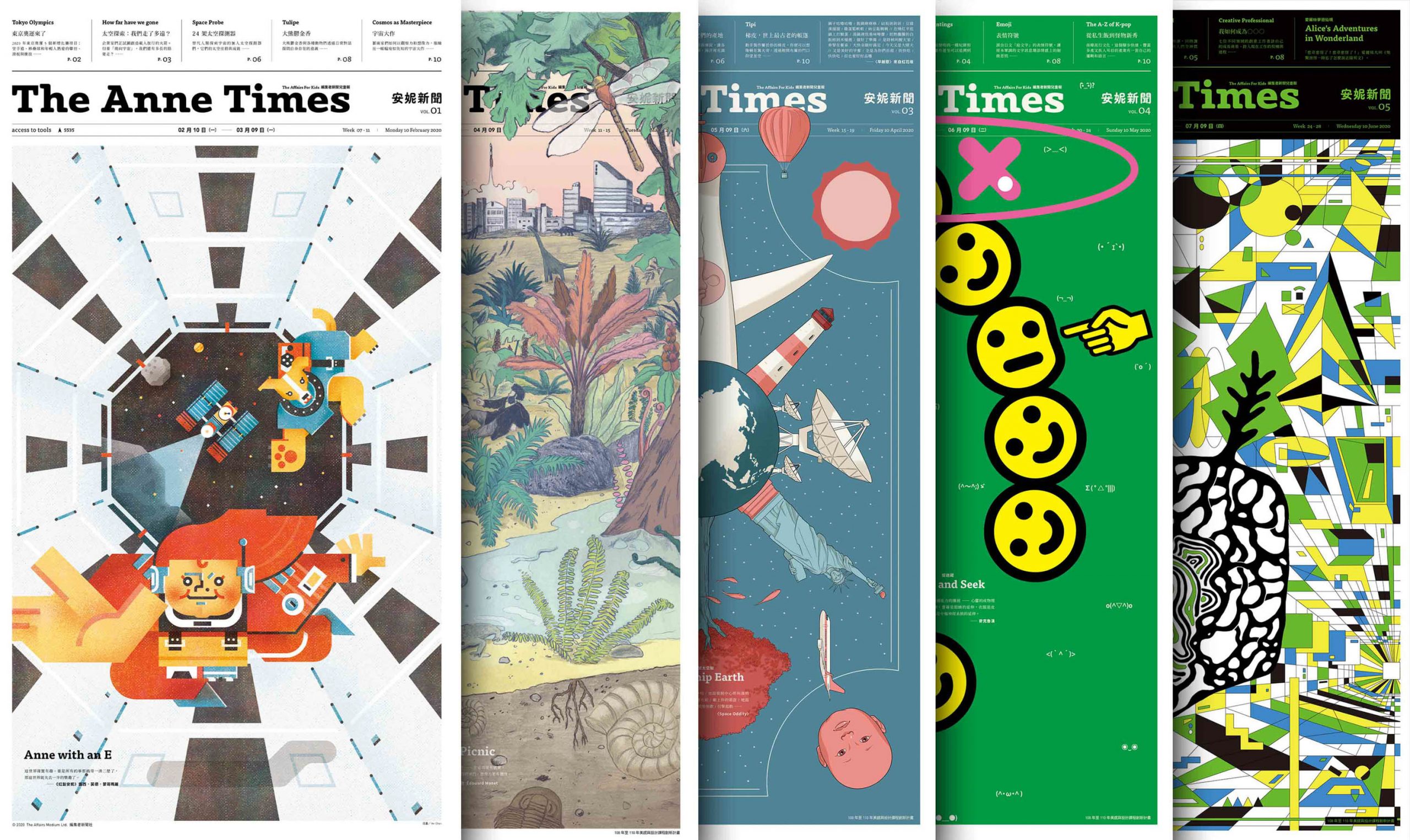Frottage Collage
Among the aesthetic experimental courses for primary school pupils, Frottage Collage was developed and implemented by Professor Hong Su, who has a background in landscape and architecture and specializes in education and design. This course aimed to help students observe textures and patterns in the environment through haptic experiences.
The course consisted of three stages. The first stage was an introductory lecture in the classroom, providing students with a basic understanding of the process and techniques. In the second stage, teachers and students left the classroom and used copying and rubbing tools such as cloth and carbon paper, rather than digital recording devices like mobile phones and laptops. The students searched for textures and patterns around them, using their skin and bodies to identify sensory feelings and integrating these with their visual experiences. This tactile process required effort, as students squatted, leaned on the floor, pressed, and rubbed the textures, creating strong impressions. After obtaining the imprints on paper, they compared the frottage imprints with the original textures, discovering an interesting relationship between the two.
The frottage results were not merely reproductions of the original materials. In the third stage, back in the classroom, the students scanned, matted, cropped, and colored the imprints to extend them into digital formats. They resized, collaged, and overlaid the tactile textures, transforming them into visual patterns to create new images and narratives. This image montage process broke the limits of the original textures, generating new possibilities and expanding the students’ creative expression.
